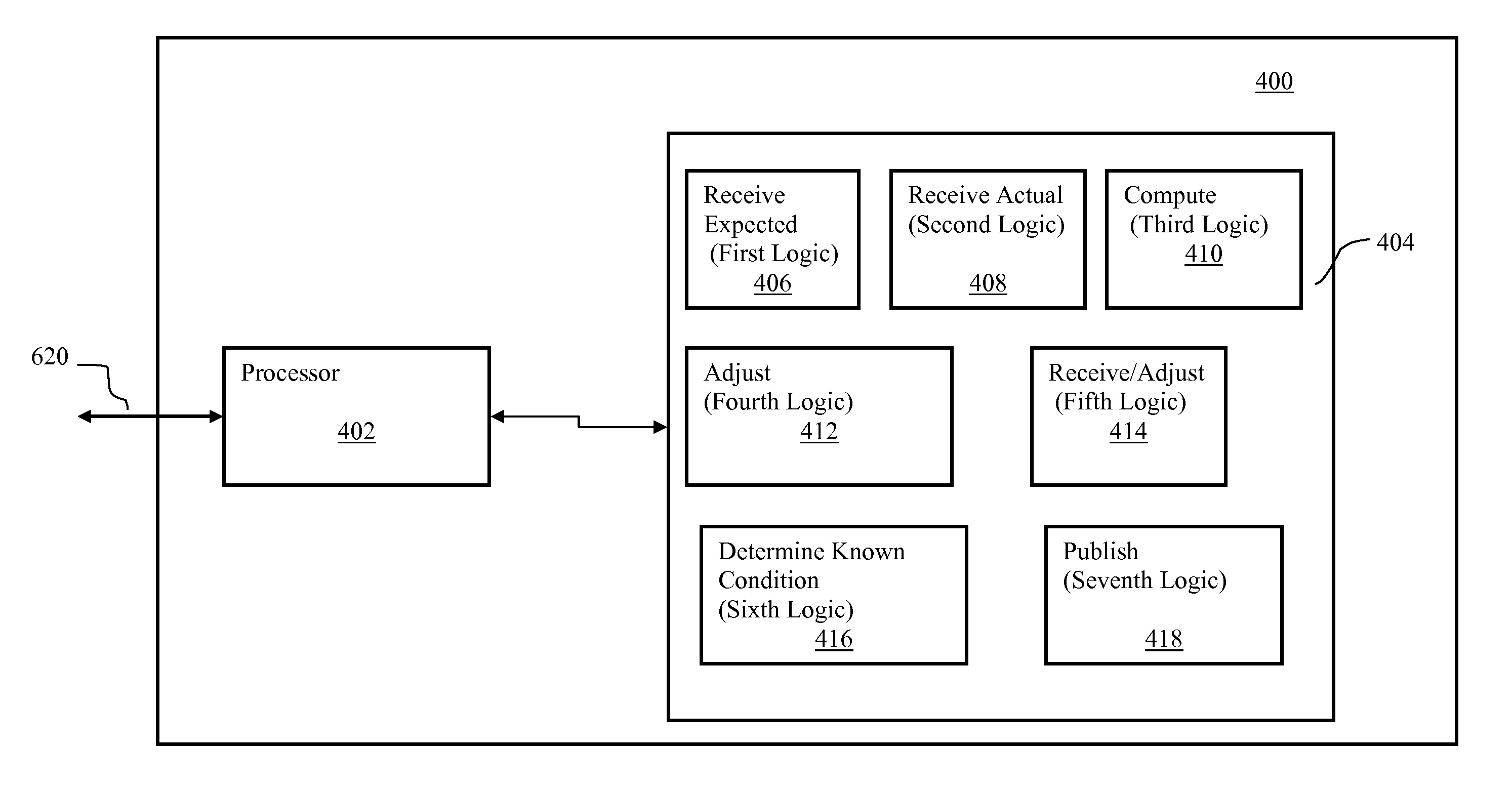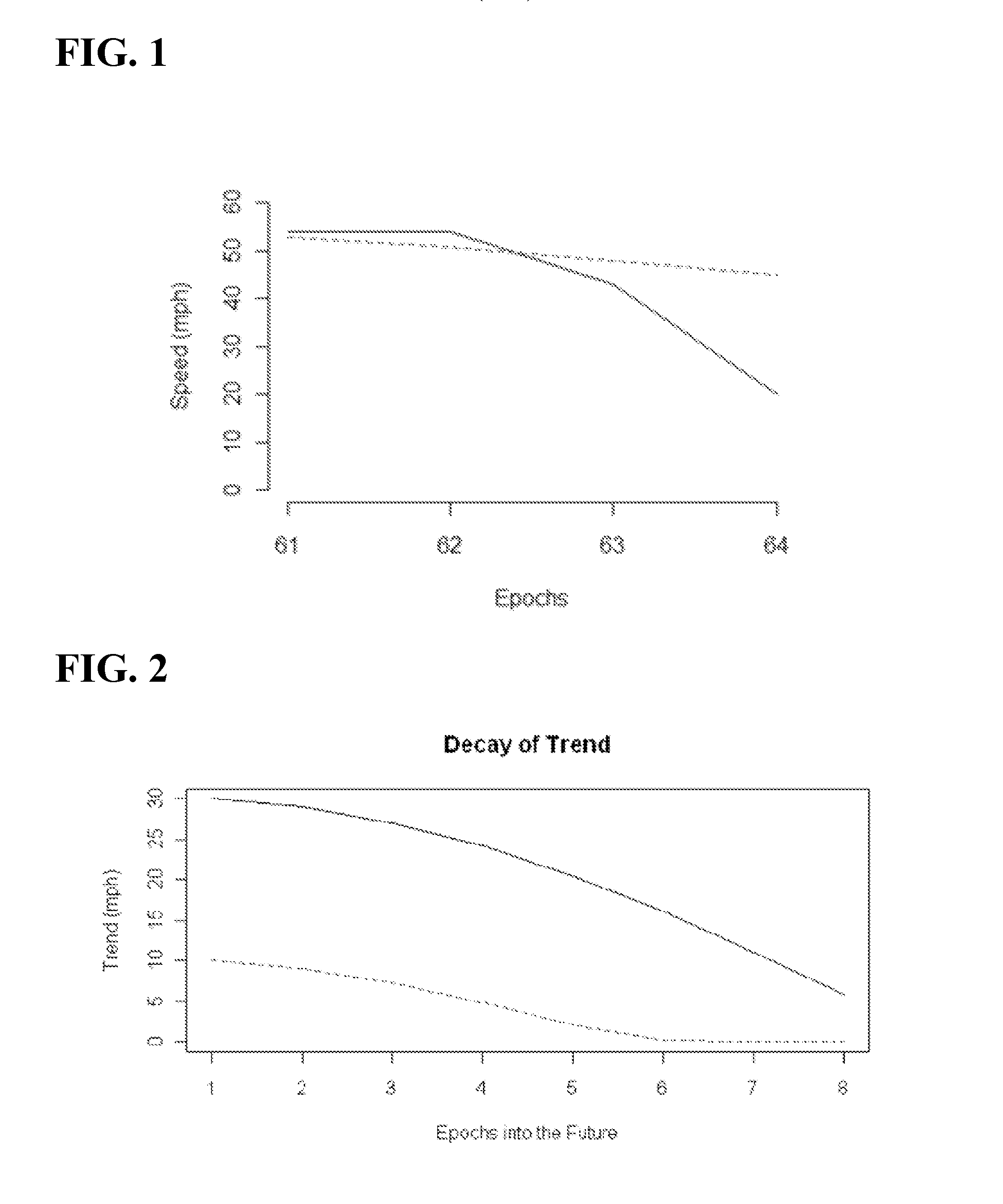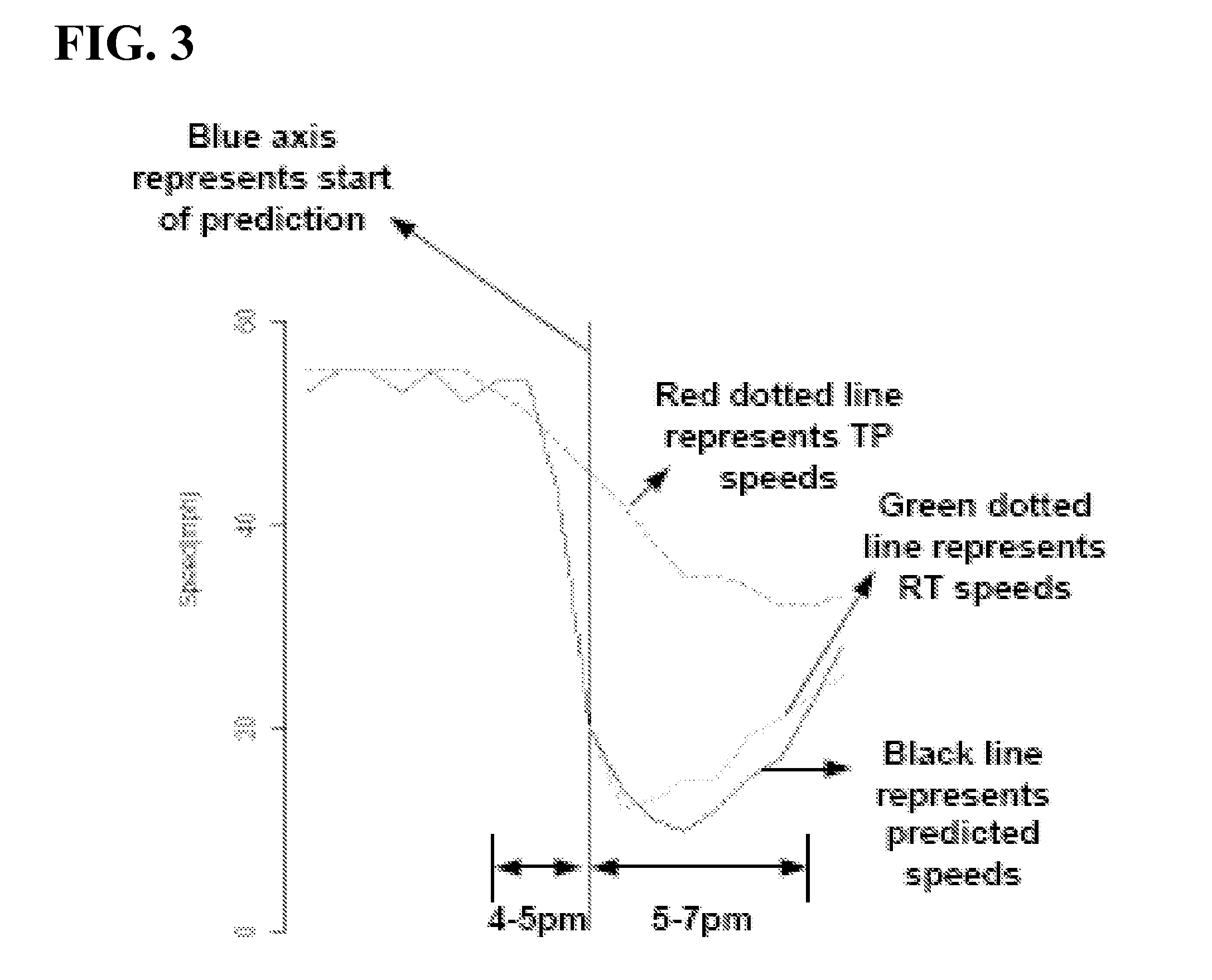Trend based predictive traffic
a trend-based, traffic-based technology, applied in the direction of instruments, analogue processes for specific applications, electric/magnetic computing, etc., can solve the problems of tp data being a poor predictor of traffic speed, affecting traffic accident severity for several, and failing to be an informative predictor
- Summary
- Abstract
- Description
- Claims
- Application Information
AI Technical Summary
Benefits of technology
Problems solved by technology
Method used
Image
Examples
Embodiment Construction
[0011]The disclosed embodiments relate to the provision of accurate predicted traffic speeds for a future time period, such as the short term future, e.g., anywhere within or up to the next 12 hours or more from the present time, accounting, for example, for conditions or events which were previously unknown, have recently occurred or are aberrations, e.g. unanticipated, unique and / or temporary, the occurrence of which may have a limited but durable affect on traffic speeds. Generally, a trend based extrapolation methodology is utilized which uses real time (“RT”) and historical / traffic pattern (“TP”) speed values of a prior period of time, e.g. the previous 1 hour, as input, which results in predicted speeds that are more accurate than using traffic pattern speed values alone. The predicted speeds may be useful for users, for example, to estimate travel times more accurately for short term future trips. For example, the predictive traffic speed output will help users make decisions...
PUM
 Login to View More
Login to View More Abstract
Description
Claims
Application Information
 Login to View More
Login to View More - R&D
- Intellectual Property
- Life Sciences
- Materials
- Tech Scout
- Unparalleled Data Quality
- Higher Quality Content
- 60% Fewer Hallucinations
Browse by: Latest US Patents, China's latest patents, Technical Efficacy Thesaurus, Application Domain, Technology Topic, Popular Technical Reports.
© 2025 PatSnap. All rights reserved.Legal|Privacy policy|Modern Slavery Act Transparency Statement|Sitemap|About US| Contact US: help@patsnap.com



